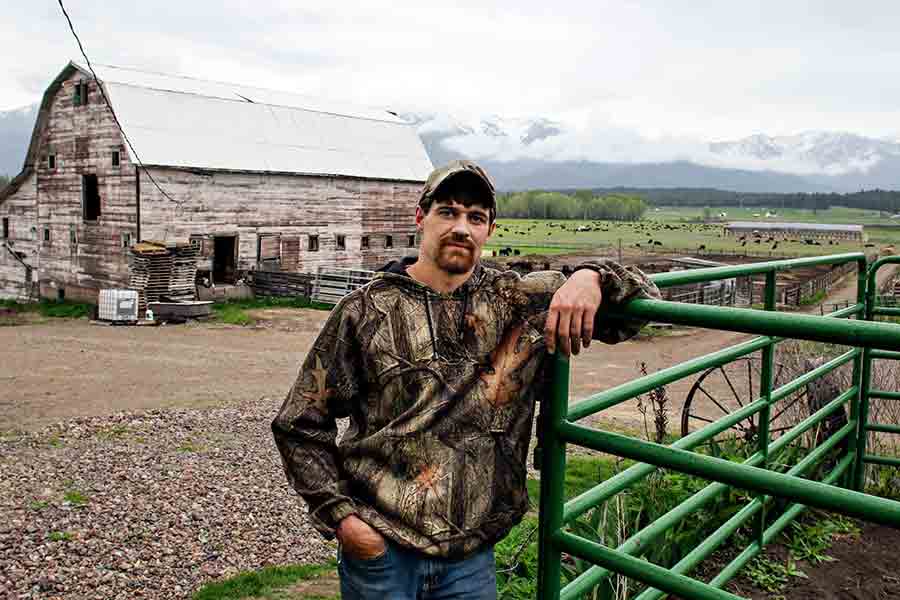Harvesting Success in a Changing Landscape
Ten years ago, Miles Passmore was the youngest full-time farmer in the valley and profiled in the Beacon. As more agricultural land turns into subdivisions, he’s keeping a family and local farming tradition alive.
By Dillon Tabish
CRESTON — From his family’s ranch and farmland on the rural outskirts of the valley, Miles Passmore has a clear perspective on the surrounding agricultural landscape.
In many ways, the view is similar to a decade ago, when 19-year-old Passmore was the youngest full-time farmer in the Flathead and one of the first profiles in the Beacon, which detailed him embarking on a hardscrabble yet fulfilling way of life with deep roots in Montana.
But in other ways, much has changed. Now 29, Passmore is a young but seasoned veteran in an industry defined by constant variability and facing outside forces that continue to whittle away at its edges.
In just the past year, Passmore and his family, who own the Missing Horn Ranch, have taken over two farms from friends who either retired or moved away. It’s an increasingly common story: The average farmer in Flathead County is 61 years old, according to the latest U.S. Department of Agriculture data. Though Passmore has 10 years’ worth of farming experience under his belt, he’s still among the youthful generation tasked with carrying on the state’s agricultural legacy.
“Quite a few of them are quitting, and there isn’t a whole lot of younger guys coming up and doing it,” Passmore says. “I hope to help try and keep it in the farm ground … It sucks to see a whole bunch of metropolis building up.”
Flathead County’s population has more than doubled since 1970, from nearly 40,000 people to over 93,000. That growth has swallowed up many parcels of former farmland, a trend that has intensified in the last decade. According to the latest USDA stats, the number of farms in Flathead County decreased 5 percent —1,094 to 1,035 — from 2007 to 2012, and acreage plummeted 32 percent, from 251,597 acres to 169,898 acres.
Paul Travis, executive director of the Flathead Land Trust, which works with families to conserve acreage through easements, said the challenges that farmers face are only increasing, further magnifying the importance of helping preserve the local agricultural legacy.
“The Flathead has some of the highest-quality soils and best farm ground in the state and the U.S. for that matter,” he says. “It’s a shame to see some of that farm ground and soils being trucked off and covered in concrete.”
For Passmore, his focus is centered on the day-to-day tasks of running a ranch and farm. His family diversified early, blending crops with livestock, which helped them navigate the fluctuating prices, market trends and the Great Recession. Two years ago, a historic drought hit, causing substantial losses for area farmers. This spring, the valley is in the midst of its wettest water year on record, delaying most seeding by weeks.
It’s tumultuous, but Passmore, working alongside his father, Mark, and mother, Cindy, wouldn’t trade it for anything.
“I still love what I do,” he says. “There’s some days that I don’t like the job necessarily that day. But it’s still the life I want to be doing, even in a trying year like this.”
“I like being out in the fields,” he adds, “being out there and planting a crop and then being able to watch it grow all year long and harvest it in fall. It feels like you’re accomplishing something — helping feed the world, I guess.”